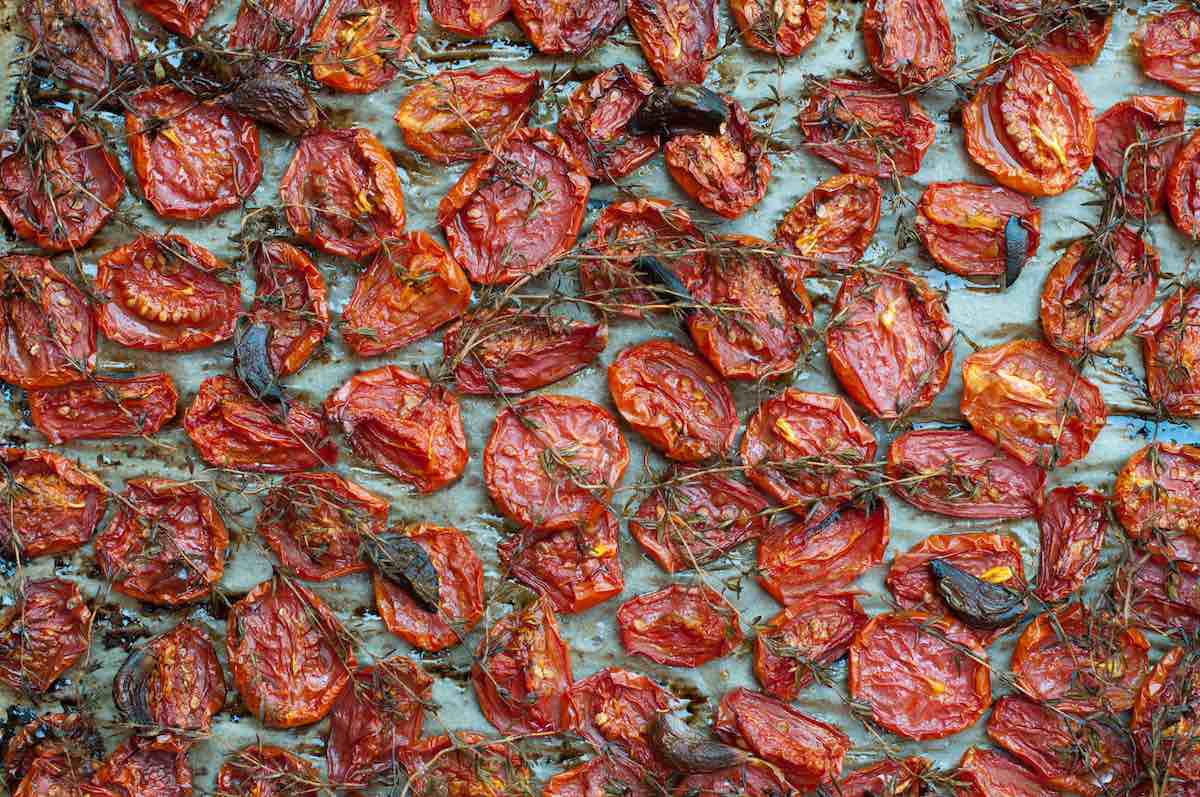 Tomatoes are one of the most delicious gifts that summer offers us. Whether you’re growing small cherry tomatoes or larger varieties, you don’t want to waste a single bite. Here are some of the best and most delicious ways to preserve your next tomato crop.
Tomatoes are one of the most delicious gifts that summer offers us. Whether you’re growing small cherry tomatoes or larger varieties, you don’t want to waste a single bite. Here are some of the best and most delicious ways to preserve your next tomato crop.
Dry tomatoes.
This is one of the simplest ways to store your cherry tomatoes or cherry tomatoes, and also one of the tastiest. When you have a big harvest, cut the tomatoes in half or thirds and spread them out on racks. If you don’t have a clothesline, you can use clean mosquito nets or even pieces of cotton or linen cloth.
Choose a warm, sunny day and lay them out on a clean, flat surface. If there are a lot of insects, you may need to put floating covers on them to keep the little creatures away.
Then, let the sun and wind do their magic to dry them. It can take several days for them to almost completely dry out, so check the weather to make sure you have a multi-day warm span ahead of you for this magic to work.
Once dry, you can store them in airtight jars or pack them in olive oil that you will have seasoned with a little salt, pepper, basil, oregano and garlic.


This technique is similar to the sun drying mentioned above, only a dehydrator is used instead of the sun.
Considering how erratic autumn weather can be, this is a great way to ensure tomato slices dry evenly and on time. You can also store larger tomatoes by slicing them thinly and spreading them out to dry. If you haven’t tried the tomato pieces yet, you might want to try them! You will need to use unripe tomatoes so that they are still firm enough and use a mandolin to slice them evenly.
Use olive oil to grease the dryer pans before placing the slices. Then sprinkle them with the toppings of your choice. Dehydrate them at 50 ° C for about 10 hours, or until they break easily when folded. Store what is not consumed immediately in airtight glass jars.
Whole canned peeled tomatoes.
This way of preserving tomatoes is the one that best preserves their sweetness and flavor. Use a sharp knife to X-cut the bottom of each tomato and remove the stems. Next, use a slotted spoon to blanch each cut fruit by immersing it in rapidly boiling water for about 30 seconds. Put them in the sink or in a bowl to cool briefly, then remove the skin.
Use a sharp knife to core them, then pack them whole, halved, or quartered in recycled glass jars. Use a wooden spoon to place them in the jars until they have released enough juice. Add 1 teaspoon of salt to each jar and put the metal lids on. Proceed in a boiling water bath for 30-40 minutes and store in the pantry for up to a year.
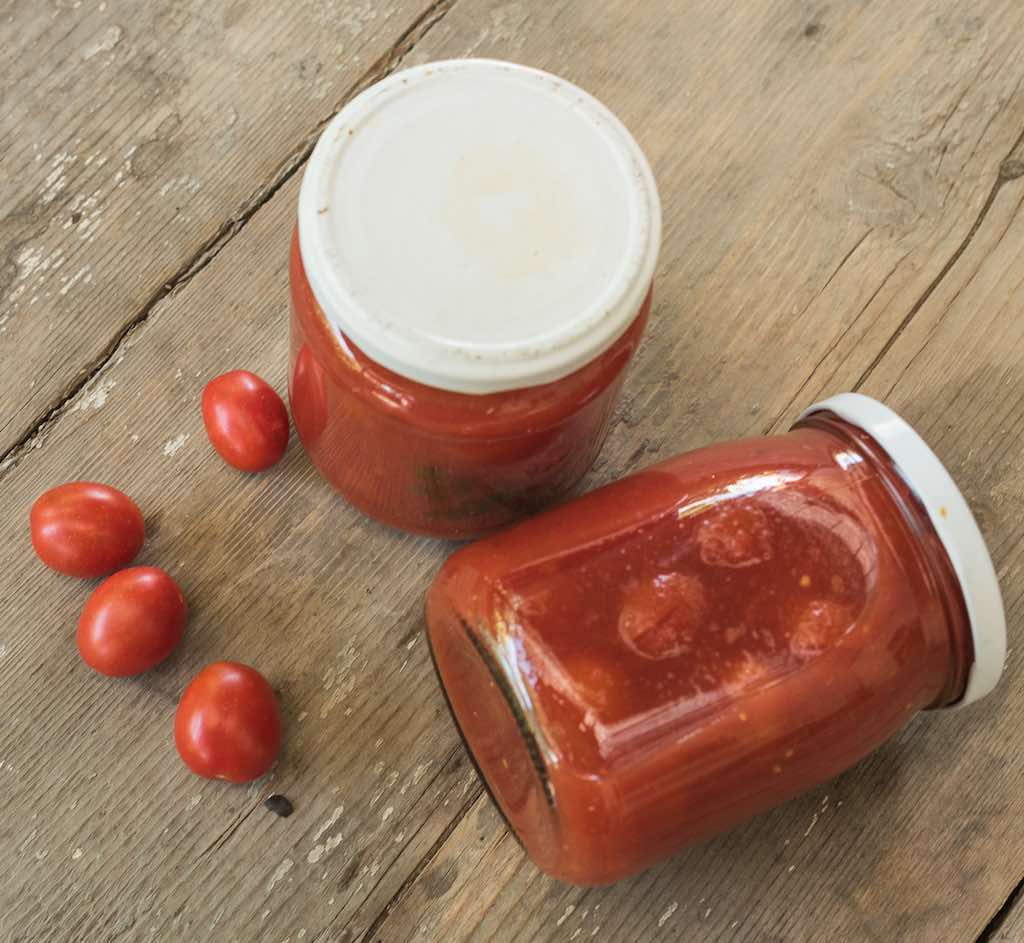

Use the same technique mentioned above to remove the skin from the tomatoes. Then cut them into cubes and put them in a large saucepan over medium heat. Season these tomatoes to your liking with your favorite herbs and spices. If you tend to cook a lot of Italian food, use salt, pepper, basil, oregano, onion and garlic. Swap basil and oregano for cumin and chili if you prefer Mexican food.
Cook for about 10 minutes. Pour about 1/2 teaspoon of lemon juice into the bottom of each of the jars, then pour the tomato mixture into the jars while it’s hot, leaving an inch of free space. Screw the lids on and work for 30 minutes in a water bath.


Use the same process as above, just make your favorite pasta sauce recipe instead of just diced tomatoes. This means you can add onions, peppers, mushrooms … whatever you want. But don’t add any dairy products. You should also add a little more lemon juice or citric acid powder to increase the acidity if you have added low-acid items like the ones mentioned above. Then work as you would with diced and spiced cherry tomatoes.
Again, you will follow the same process as the previous two. Only this time you have completely immersed yourself in the realm of salsa.
Since most sauces require lemon or lime juice, you should have a mixture acidic enough for a boiling water bath rather than pressure canning. Don’t add low-acid items like black beans or corn to the mix and you should be fine.
You should only use 3 cups of added vegetables for every 10kg of tomatoes. Adding more will reduce the acidity of the tomatoes too much to store them safely. After pouring the sauce into the jars, work them in a water bath for 30 minutes.
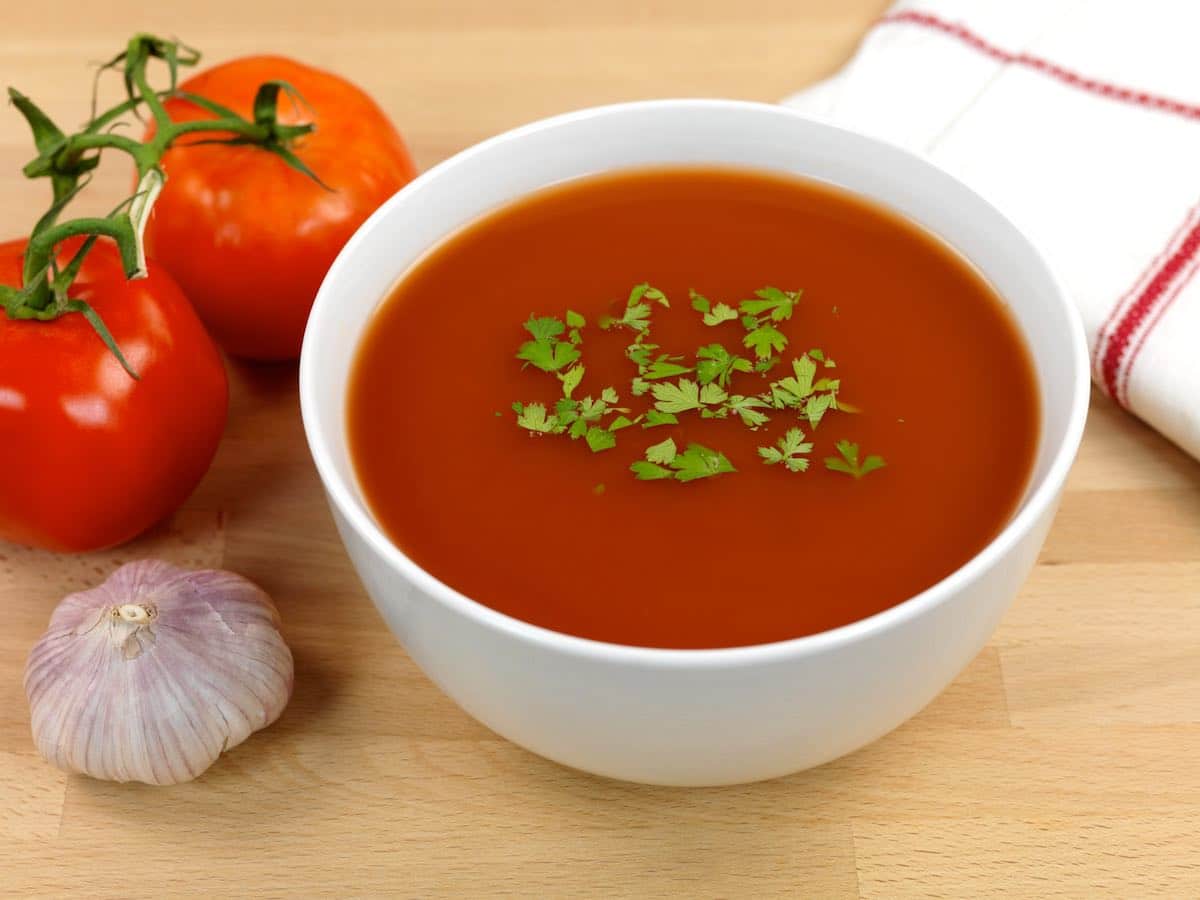

Tomato soup can be a little tricky when it comes to preserving leftover tomatoes.
This is because most tomato soup recipes require additives such as cornstarch, wheat flour, or dairy to thicken the liquid. None of them can be safely stored for the long term, even if pressure canning is used. Therefore, the best way to make a thick and hearty tomato soup is to use Roma tomatoes (pasta), then boil the soup to condense it.
Tomato
soup.Then you can pour it into clean, sterilized jars and leave it in a water bath for 35 or 40 minutes.
Pasta.
Take a few dozen fresh tomatoes, peel them and remove the seeds following the method indicated above. Subsequently, chop them and put them in a pot with 3 chopped red peppers, a few chopped garlic cloves and 1/2 chopped onion, a teaspoon of salt, a little ground pepper and the herbs of your choice. Bring to a boil and then simmer for about half an hour. Remove from heat and blend in a blender or hand blender. Some people run it through a colander at this point, but I like coarse pasta.
Transfer this puree to a slow cooker. Keep on high heat for an hour and then cook over low heat. Stir once every hour or so and let it reduce until thick enough to stick to a spoon as you go. Think cold pudding or oatmeal.
Take your clean and sterilized jars and add 1 teaspoon of lemon juice to each jar. Pass the dough through a funnel and ladle leaving a space of 1 cm. Put the lids on and work in a water bath for 45 minutes.
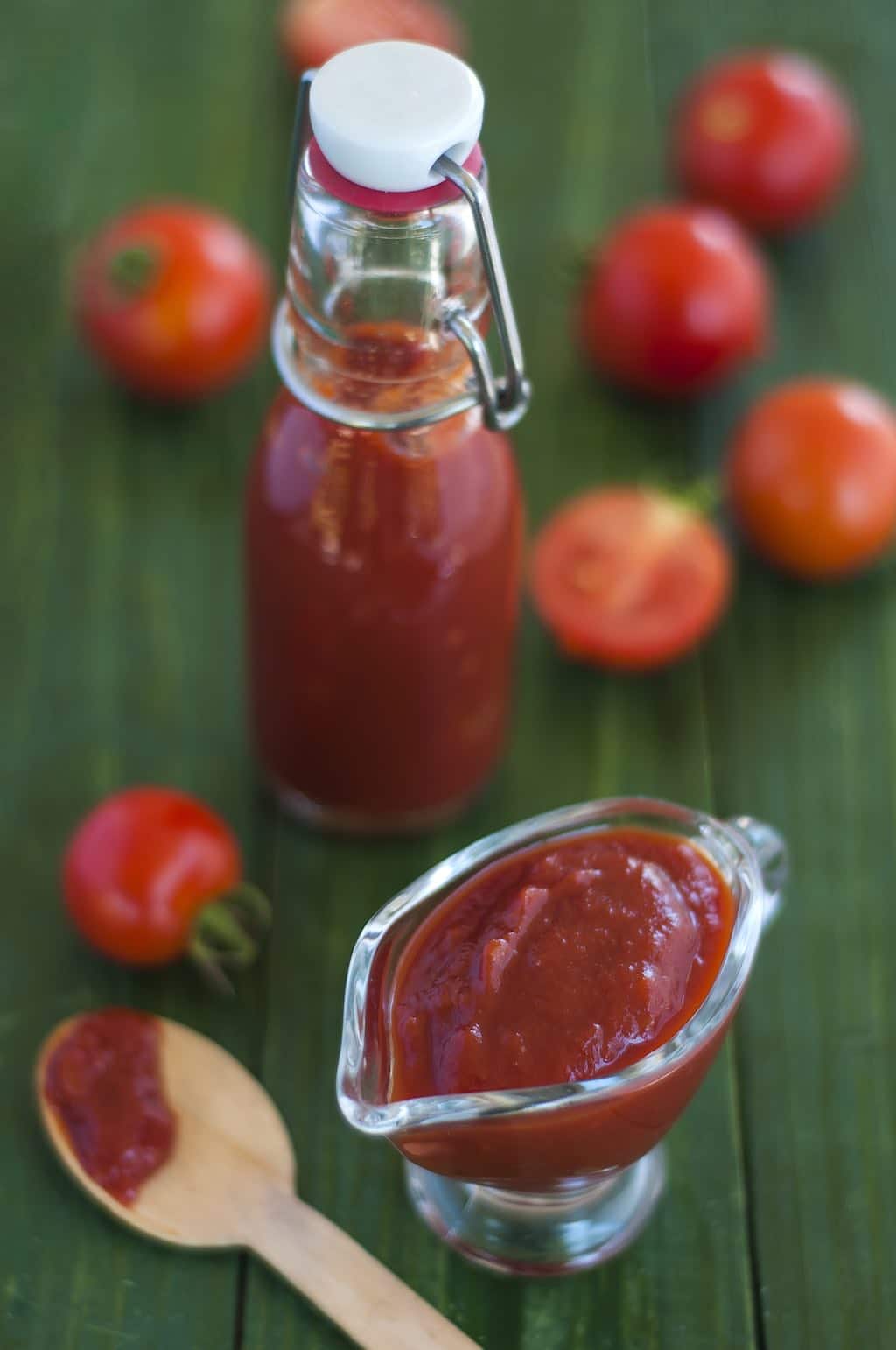

Did you know that ketchup tastes different all over the world? Therefore, it is important to try different homemade ketchup recipes to find out which one you like best. Whatever your choice, it’s a great way to store tomatoes for later. Once you’ve found a recipe you like, you can get started. Prepare a large amount and store in clean, sterilized jars. Then, put the lids on and work in a water bath for 20-25 minutes.
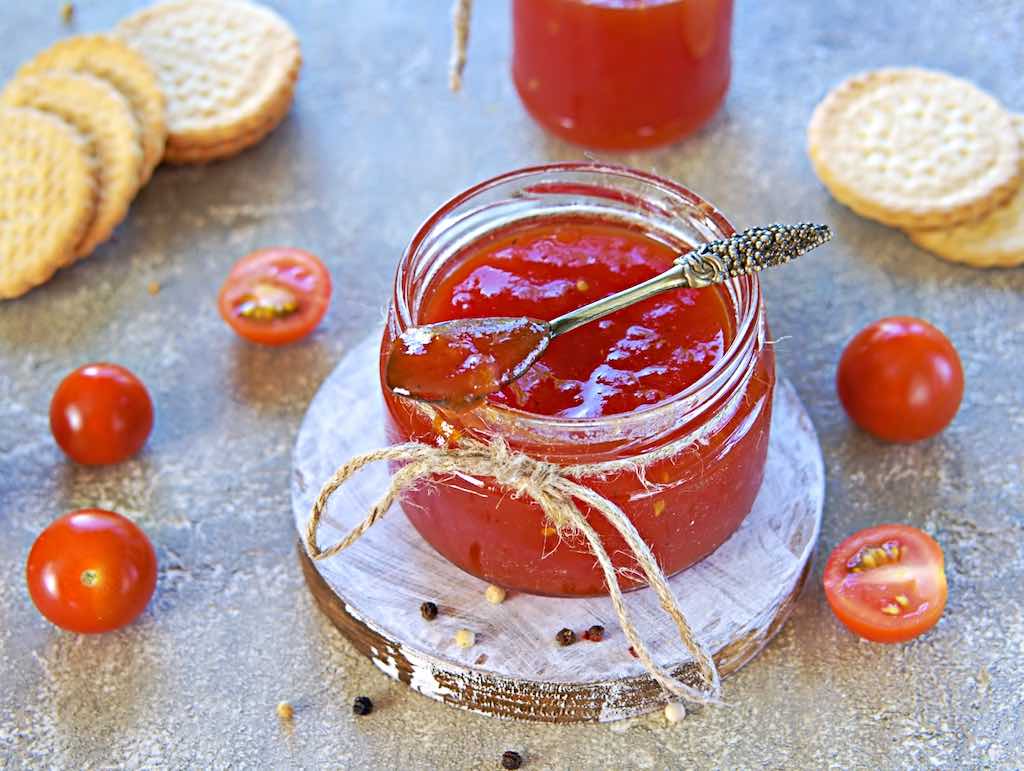

If you like ketchup, chances are you like tomato jam too. Most people only use tomatoes in savory dishes, but they make a surprisingly good jam. Think about how sweet the freshly picked tomatoes are and then think about how good they will be to spread on toast or muffins.
As with ketchup, it’s good to experiment with different jam recipes until you find one you really like. Some people like to add cloves to theirs, others like cumin … or maybe you want to roast your tomatoes with balsamic before making jam. Be creative. Once you’ve made a good batch, store it in clean, sterilized jars. Once the lids are closed, cook them in a double boiler for 10-15 minutes.
Pickled cherry tomatoes.
Have you ever had a large supply of cherry tomatoes at the end of the harvest season? A great way to preserve tomatoes is to pickle them. Wash and sterilize a couple of small canning jars. Next, put a clove of garlic (or half of a large clove) in each jar, along with a sprig of thyme and a couple of peppercorns.
If you want some heat, add some chili or a thin slice of jalapeño pepper as well. Wash and dry the tomatoes well, then make a hole in each one with a toothpick or skewer. This will allow the pickle juice to seep into them. Then divide them into jars.
Make a basic brine with 1 1/2 cups of white vinegar (5%, not pickled vinegar), 1 cup of water, 1/4 cup of sugar, and 1.5 tablespoons of salt. Bring to a boil, stirring well to make sure everything melts, then remove from heat and let cool for a few minutes.
Use a funnel and ladle to transfer this liquid to the jars. Use a toothpick to move the tomatoes around a bit to release any air bubbles. Then, clean the edges, put the lids on and work in a water bath for 15 min. You can also skip the double boiler and leave them as “quick pickles”. They will need to be refrigerated and eaten within 2 months, but they will be just as good.
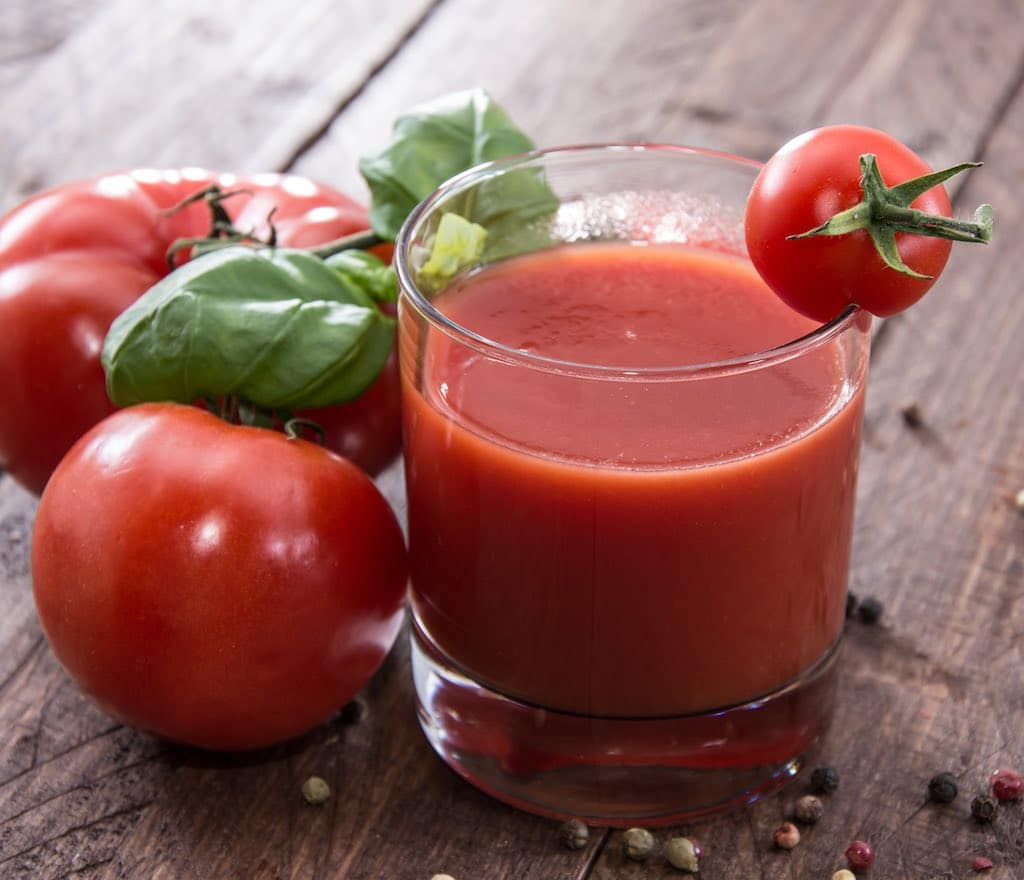

Some people make their own tomato juice by simmering fresh tomatoes in water and then blending them and running them through a colander. I go the easy way and use a juicer instead. Using a juicer also allows you to easily add other vegetables, and therefore more flavorings. And what’s best, it’s a great way to preserve the fresh flavor of tomatoes in a different way than the sauce we’re used to.
For normal tomato juice, take all the tomatoes around and pass them through the juicer. When you are halfway through, you can add some raw onion or garlic, then continue with the rest of the tomatoes.
Tomato juice.
When you have all the juice, put it in a large pot. Cook over low heat for about 10-15 min. At this point, you will want to flavor the juice to taste. If the juice is sweet, you can add a little sugar or honey. Salty juices benefit from garlic and onion powder, salt, chilli or hot sauce – you decide. Next, take your washed and sterilized jars and pour some lemon juice into each one. Put the lids on and work in a water bath for 45 minutes.
Frozen.
The worst freezing mistake I ever made was putting a bag of sliced tomatoes in the freezer “for later”. Do not do it. This is the wrong way to store tomatoes in the freezer. Spray a couple of muffin molds with cooking oil and arrange a cherry tomato or a large piece of peeled tomato on each section. Freeze overnight or until firm to the touch. Then transfer them to freezer bags and clearly label them with the date. Repeat this process until all leftovers are frozen. You will be able to get everything you need without hitting anything with a hammer, crying hysterically.
You can also use this muffin pan method to freeze small amounts of tomato paste, gravy, etc. You just have to grease each section well before pouring the liquid. When everything is frozen, take out the balls and transfer them to freezer bags.
Tomato powder.
When all else fails, pulverize it. Seriously, think about how often you cook with ingredients like garlic powder, onion powder, and similar seasonings. Tomato powder is easy to make, keeps for years and is incredibly versatile. Add it to dishes for a burst of flavor or drinks for an extra touch of vitamin C. Use the same method mentioned above to dehydrate tomato slices. Once the slices are crisp and can be broken in half, grind them into a powder using an electric coffee grinder.
You can leave this powder as it is or season it. Consider mixing it with some salt, garlic powder, paprika, and Mediterranean spices. It makes a good seasoning for various dishes and is also great seasoned in stews and sauces. You can even mix it with hot water for an instant soup-like drink.
Source: ecoinventos.com









